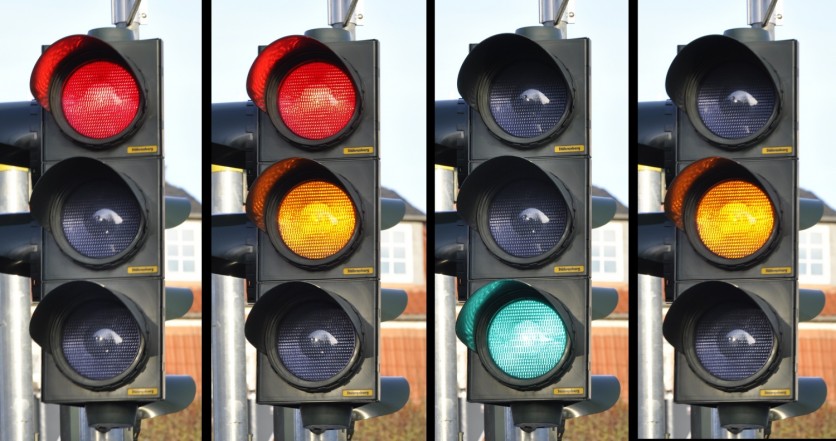There are three signals at a traffic light: red means stop, green means go, and yellow means that you have to slow done because the red light is about to appear. But how about if we have another light?
Transportation engineers from North Carolina State University are now suggesting a "white light" that would allow autonomous vehicles to aid in traffic flow control while also informing other drivers of their presence.
In computer simulations, the research team claimed that the new method dramatically decreases fuel usage while enhancing travel time across intersections.

White Phase Concept
"This concept we're proposing for traffic intersections, which we call a 'white phase,' taps into the computing power of autonomous vehicles (AVs) themselves," Ali Hajbabaie, co-author of the study, said in a press release statement.
"The white phase concept also incorporates a new traffic signal, so that human drivers know what they are supposed to do. Red lights will still mean stop. Green lights will still mean go. And white lights will tell human drivers to simply follow the car in front of them."
The foundation of the white phase concept is the wireless communication capability of AVs with each other and the computer managing the traffic signal. This would turn on the white light when there are enough AVs near the intersection.
The white light would indicate that the AVs are planning their movements to manage traffic through the crossroads more quickly.
Any human-driven, non-automated vehicles would only need to follow the car in front of them. For example, if the car in front of them stops, they must stop as well. If the car in front of them enters a junction, they must also do the same.
The traffic light would go back to the standard green-yellow-red signal pattern when there are too many human-driven vehicles nearing the intersection.
The "white phase" traffic intersection concept was initially presented by the researchers in 2020. But that first design depended on centralized computing, with the traffic light's computer in charge of gathering information from all approaching AVs, performing the necessary calculations, and then instructing the AVs on how to cross the intersection.
The simulations showed that the number of AVs at a white-phase intersection had a relatively minimal impact on the flow of traffic. The advantages grew as the proportion of AVs near white phase junctions climbed, according to the team.
The White Light's Prospects
The researchers acknowledge that neither AVs nor governments will be able to construct brand-new traffic signals at every intersection in the near future. They also acknowledge that AVs will not be able to implement the new distributed computing strategy as soon as possible.
However, Hajbabaie noted that some aspects of the white phase concept may be implemented with only a few tweaks to both existing AVs and crossings.
"For example, ports see high volumes of commercial vehicle traffic, for which traffic flow is particularly important. Commercial vehicles seem to have higher rates of autonomous vehicle adoption, so there could be an opportunity to implement a pilot project in that setting that could benefit port traffic and commercial transportation."
The results of the study were published in EEE Transactions on Intelligent Transportation Systems.
Related Article : Creepy Googly Eyes Could Make Self-Driving Cars Safer for Pedestriants, Researchers Claim

![Apple Watch Series 10 [GPS 42mm]](https://d.techtimes.com/en/full/453899/apple-watch-series-10-gps-42mm.jpg?w=184&h=103&f=9fb3c2ea2db928c663d1d2eadbcb3e52)



